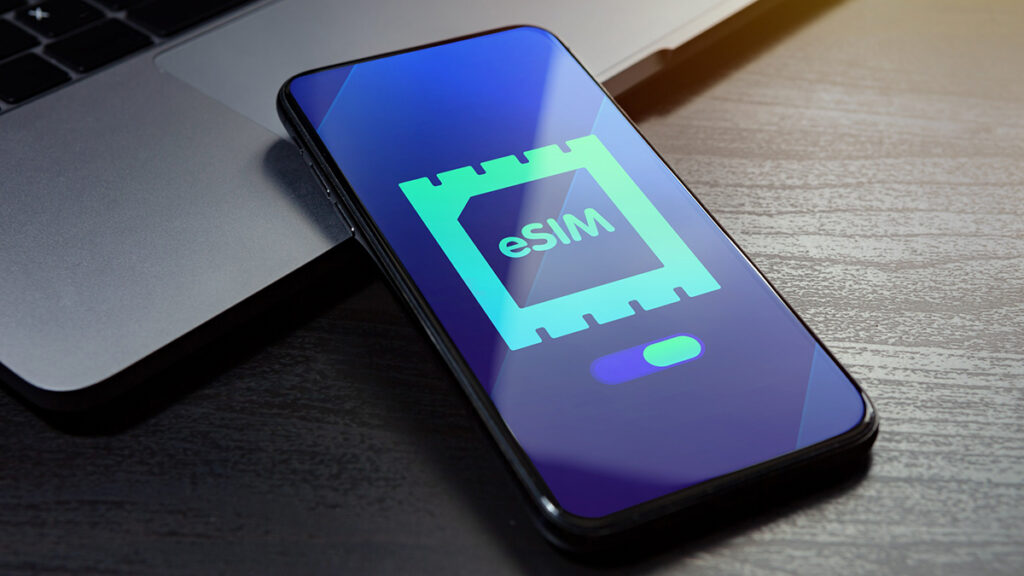Table of Contents
The speed of life is rapidly increasing, and we can no longer imagine how we can live with a slow internet connection or data download. We are increasingly annoyed when something hangs or takes a long time to load, as we have long since chosen a fast mode of work and leisure. But still sometimes we have to face problems with freezing when working with a smartphone or any other device. And it happens that in the process of activating eSIM, the phone can hang. In what cases does it happen? We have prepared a list of quick solutions. Meanwhile, let’s get to know Embedded SIM better.

eSIM — Best Solution for Optimizing Cellular Сommunication
What is e-SIM? It is the newest format of cellular communication, which is one of the smallest elements of the structure of any gadget. This technology frees up the space previously occupied by a standard SIM card chip, allowing for innovations in the power and performance of a smartwatch, tablet or smartphone. improving usability and flexibility in connecting to operator networks.
According to many IT experts, eSIM emerged as a result of the evolution of mobile communication standards and technologies aimed at improving usability and flexibility of connection to operator networks. From this statement it is worth highlighting that one of the key functions of Embedded SIM or MFF2 technology: the M2M form factor is the possibility of easy switching between mobile operators, and even simultaneous use of services of different operators in the conditions of work with one smartphone.

Why it’s Important to Activate eSIM in the 21st Century: The Problem & Solution
- Problem. In the early days of mobile communications, conventional SIM cards were used, which contained operator and subscriber information. However, with the advent of smaller devices and the need to simplify the process of activating and switching operators, it became clear that a more flexible and convenient method was needed;
- Solution. In the 2010s, work began on inbuilt SIM cards. These allowed data to be stored on a chip inside the device, instead of a physical card. This opened up new possibilities for flexibility, control and remote activation of devices.
Implementation & Activation of eSIM: Key Points in the Story
- Implementation: In 2013, the Mobile Operators Association organisation began developing standards for electronic SIM. This included specifications for the implementation of virtual SIM cards that would be supported by different device manufacturers and operators;
- First device: 7 years ago, Google introduced the Pixel smartwatch with Embedded SIM support. It was one of the first commercial use cases of this technology. Developers found some problem with eSIM each time, but all the time they solved difficult problems;
- Modernity: By early 2023, this data card has become a standard feature in many modern devices, including smartphones, tablets, laptops and even cars. Many businessmen and travellers can no longer imagine life without an embed, and in fact, the map makes life very easy for the modern person. However, are there times when there are some difficulties in the operation of e-SIM? Let’s found out.
Why Should I Start Using an eSIM?
- eSIM activation greatly simplifies the process of connecting to the operator’s network. You don’t need to insert or change physical SIM cards, and all setup can be done via the app on your device;
- Some devices support multiple eSIM profiles. This means you can use different phone numbers or data plans on the same device. This is especially useful for travelling or when changing data plans;
- Smaller devices such as smartwatches or wearable gadgets don’t have place to insert a physical SIM card. The eSIM allows them to connect to a mobile network.
What Problems Can Occur During eSIM Activation?
- Incorrect data. Incorrect data entry, such as card serial number, may result in unsuccessful activation;
- Identity document. International operators may require additional documents or identification for activation;
- Operator restrictions. Operators may impose certain restrictions or requirements for activation of the embedded SIM card, such as selection of certain tariff plans;
- Problems with QR code. Reading the QR code when there are errors or malfunctions in the application that controls the eSIM can cause problems during the activation process;
- Problems on the operator’s side. The operator may encounter technical problems that can affect the activation process. What should I do if my eSIM is stuck during activation?
Problem Solution Code Name: eSIM stuck
How do we solve this? Let’s see:
- Reboot your device – this may help resolve temporary issues. Try turning your device off and on;
- Make sure you have a stable and active internet connection. Without network access, e-SIM activation may be difficult;
- Make sure you have correctly entered all required data, such as serial number or other credentials;
- Сontact your service provider. They will be able to provide you with instructions and support on how to activate the eSIM;
- You can find information about the activation status in the app or device settings;
- Reset settings: In some cases, you may need to reset the MFF2 and restart the activation process.
Summary
The take-home message is the answer to the question: “Why is my eSIM Stuck on Activating?”, most likely the problem is related to a poor internet connection, or a technical failure on the part of the operator, or a problem with the smartphone or tablet itself. Follow the above instructions and, if necessary, contact your service provider for professional assistance.





